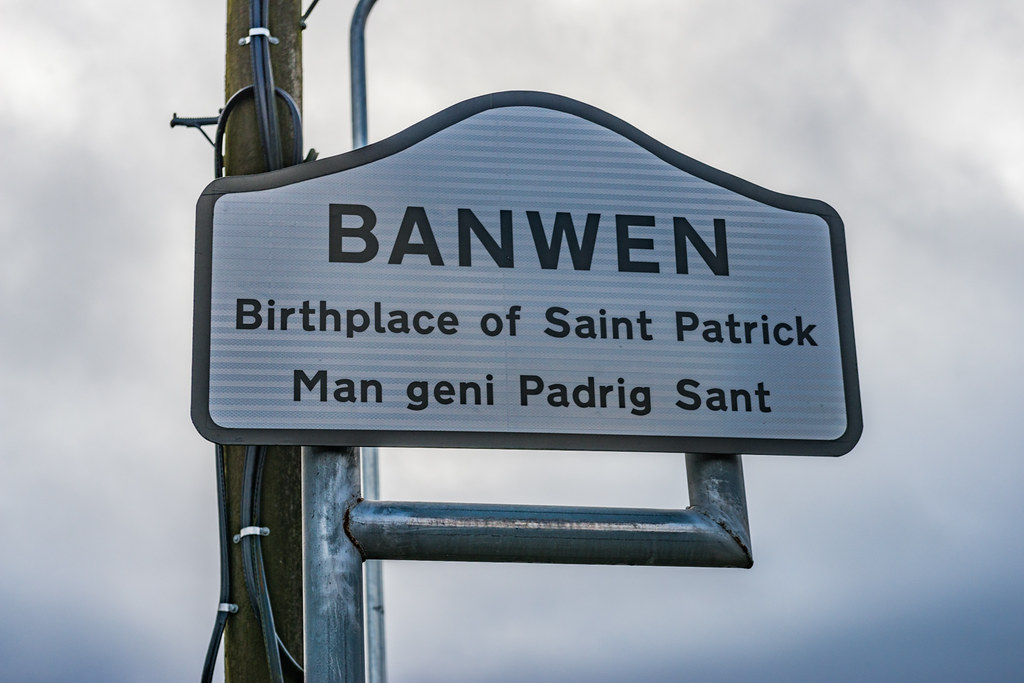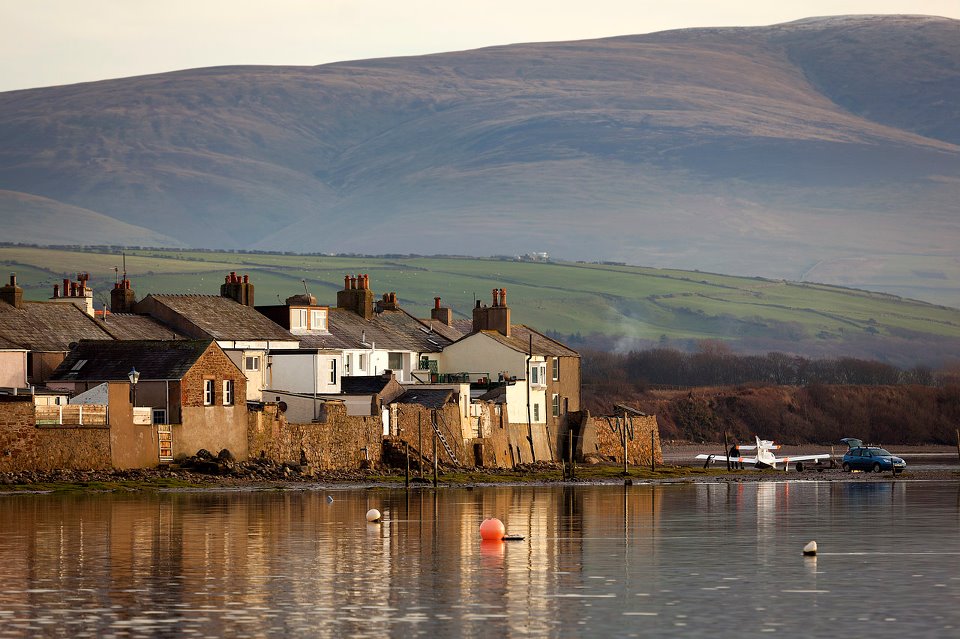Actors dressed in medieval clothing have re-enacted St Patrick's first landing on Irish shores in 432AD...
A saintly arrival: Actors dressed in medieval costumes take to a rowing boat to re-enact St Patrick's first landing on Irish shores in 432AD
Saint Patrick brought religion to Ireland after having a vision from God while he was still a slave
After escaping slavery Saint Patrick trained at a French monstary before returning to Ireland
Legend has it that he rid the country of snakes - although many interpret this as meaning paganism
Today, raucous celebrations are found around the world as people celebrate their Irish ancestry - no matter how distant
By Rod Ardehali For Mailonline
12 March 2017
Saint Patrick's Day is perhaps the most raucous celebration of any saint as parties and parades take place across the globe every year on March 17.
Shouts of slainte are to be heard amid clinking glasses of Guinness and whisky as people celebrate their Irish ancestry - no matter how distant.
So far have the Irish travelled that revelry is to be found in Australia, America and even parts of Africa - not forgetting Dublin itself.
But how much do most people really know about the Patron Saint of Ireland, the 16-year-old boy who was kidnapped by pirates - who allegedly rid Ireland of snakes - and whose original vestiments were actually blue, not green?
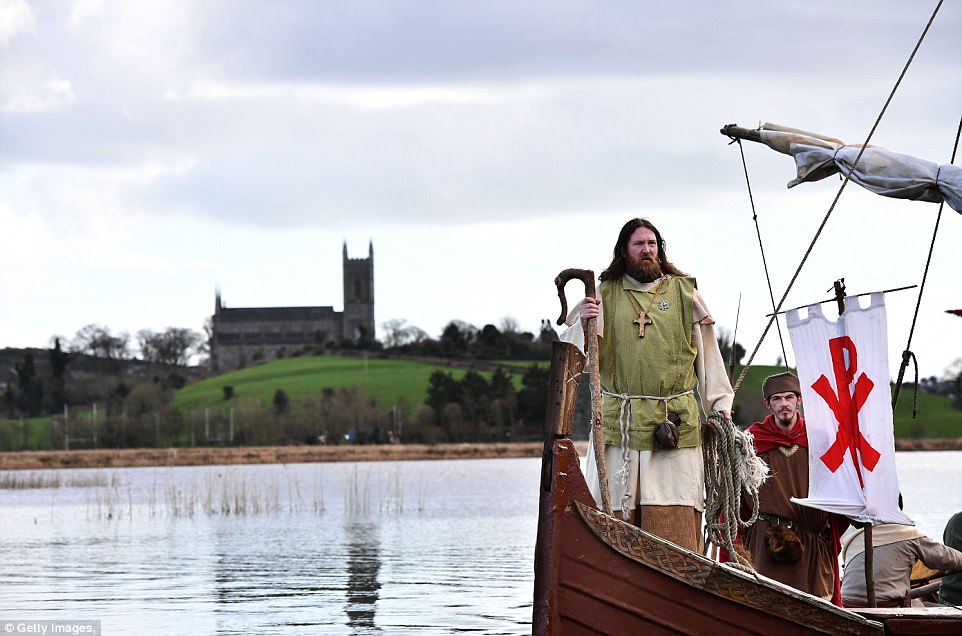
An actor playing Saint Patrick sails past Down Cathedral as the re-enactment of his first landing on Irish shores takes place at Inch Abbey in Downpatrick, Northern Ireland. The Irish annals for the fifth century date Patrick's arrival in Ireland at 432 and the patron saint of Ireland's remains are believed to buried at Down Cathedral
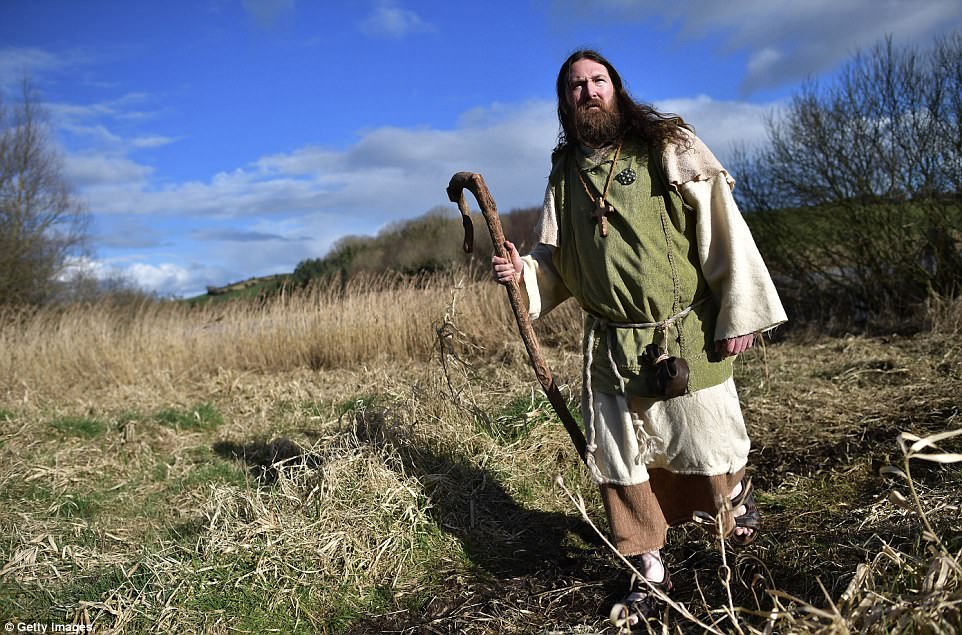
When Saint Patrick was 16-years-old he was kidnapped by Irish pirates and sold into slavery in Ireland. According to his autobiographical confessions, the following six years were spent working as a shepherd on Mount Slemish in Co. Antrim
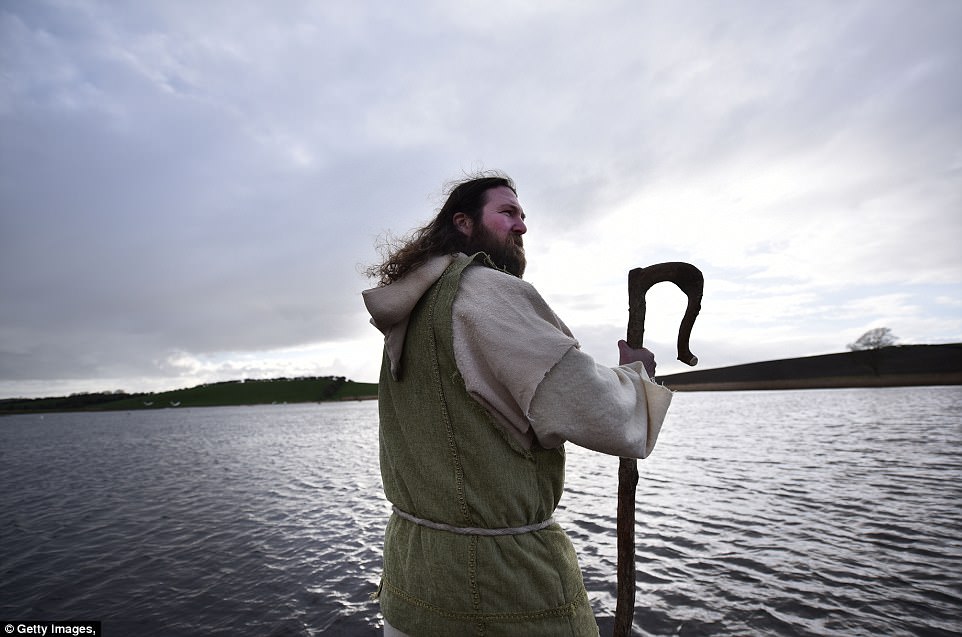
During his six years imprisonment at the hands of slave owners, Saint Patrick began to reflect on his lack of faith and became a devout follower of Christianity. He spent much time praying and fasting before one day having a vision which led him to stow away on a boat bound for Britain - returning to his family
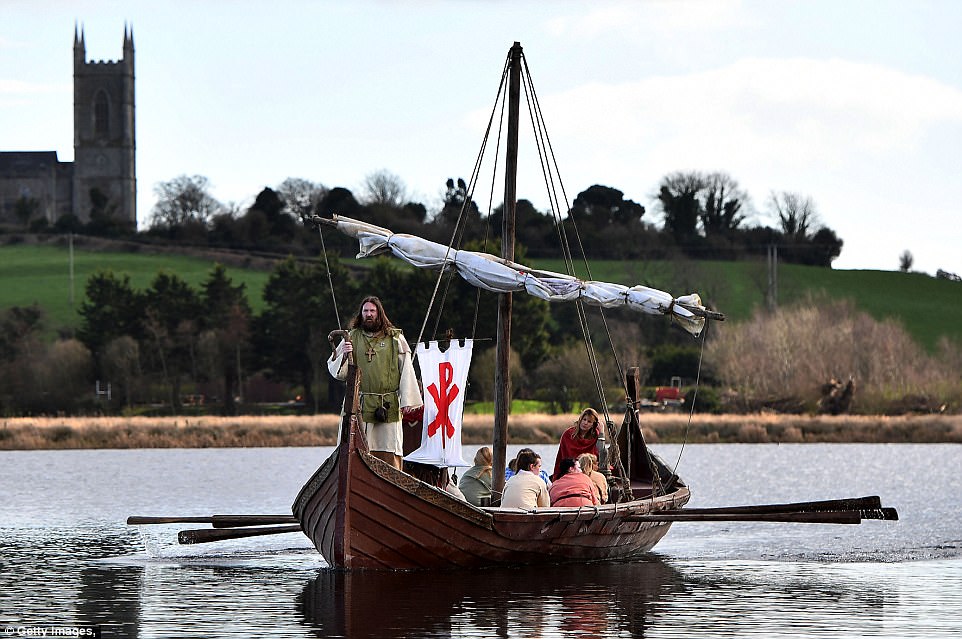 One night Saint Patrick had a dream that the Irish were calling him back needing to hear the word of God. This inspired him to return one day. However, he felt ill-prepared for a life as a missionary and travelled to France to train at a monastary
One night Saint Patrick had a dream that the Irish were calling him back needing to hear the word of God. This inspired him to return one day. However, he felt ill-prepared for a life as a missionary and travelled to France to train at a monastary
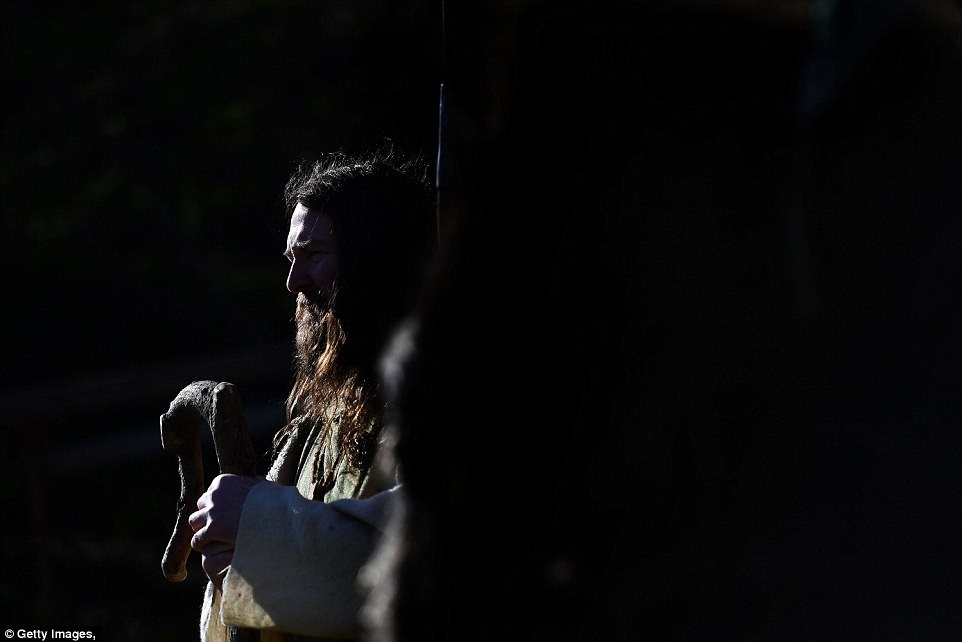
Some 12 years later he returned to Irish shores as a bishop having received the Pope's blessing to spread the word of God
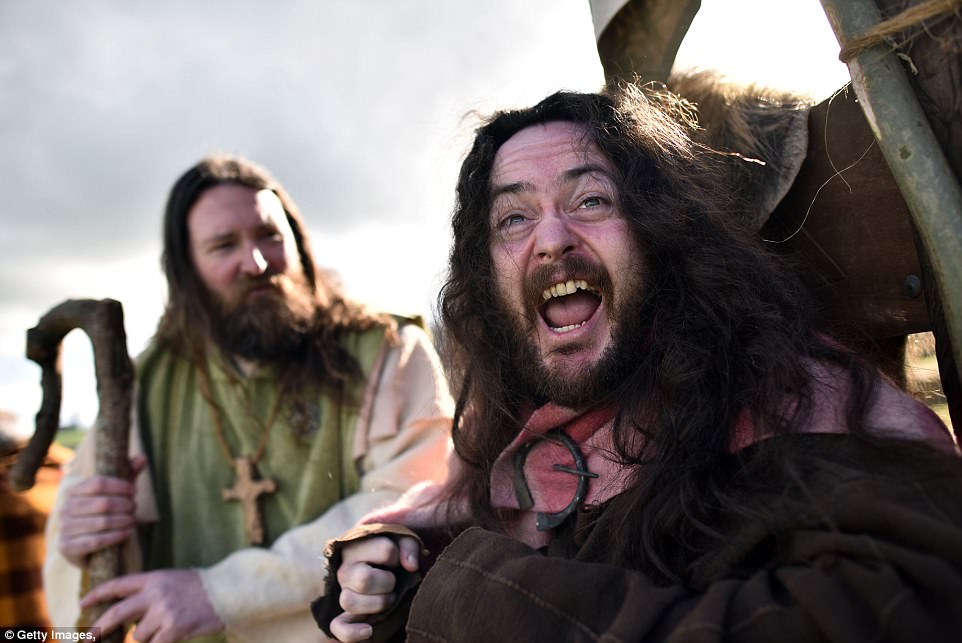
Saint Patrick met the Celtic chieftain, Dichu, who would become his first convert. Dichu gave Patrick a barn two miles away at Saul - 'sabhall', meaning 'barn' in Irish. This became his first church
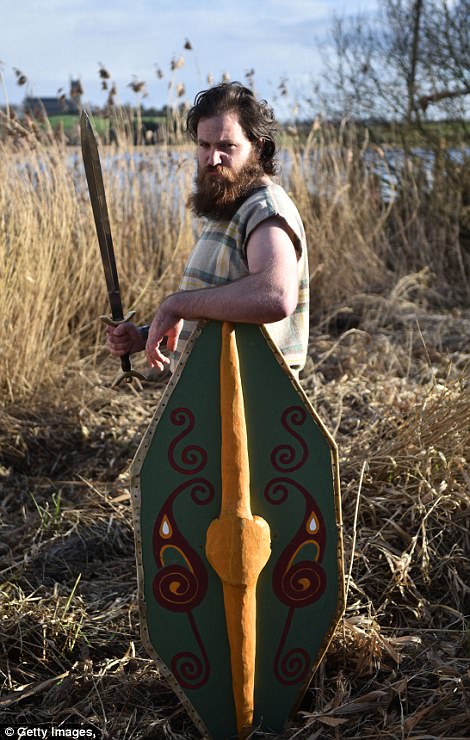
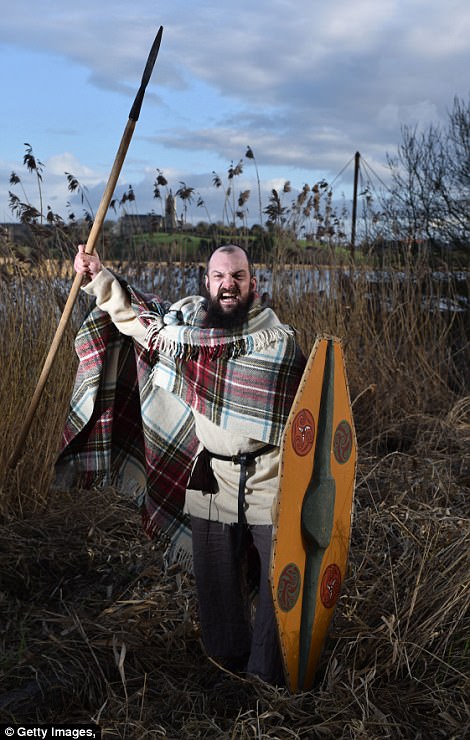
Some of chieftain Dichu's warriors pose during their reenactment carrying traditional Celtic weaponry and draped in tartan throws
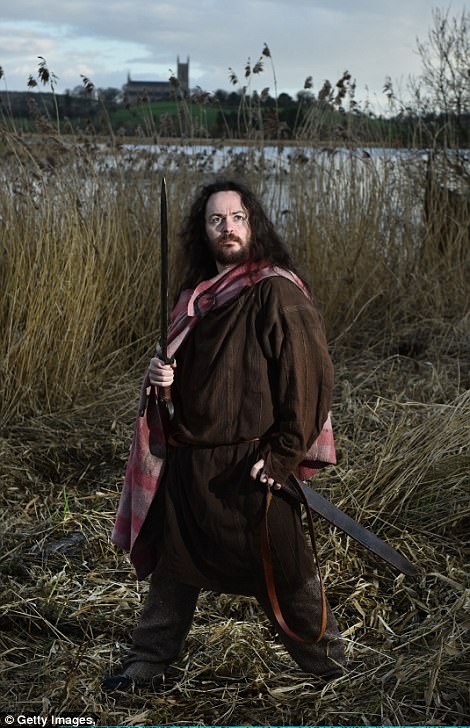
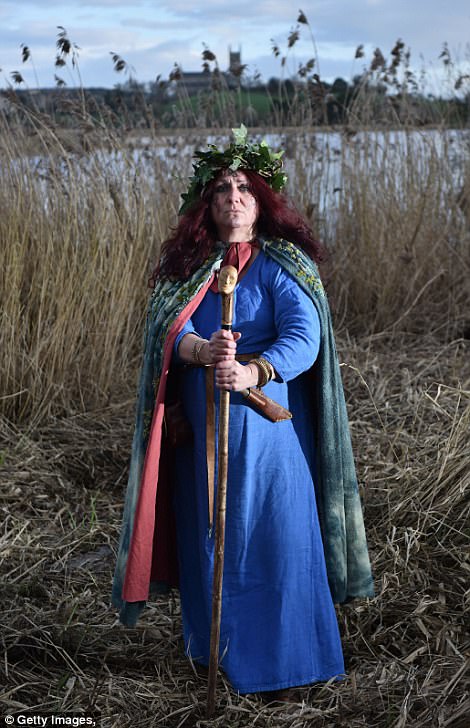
King Dichu and his druidess pose for a portrait during the re-enactment of the landing of Saint Patrick on Irish shores
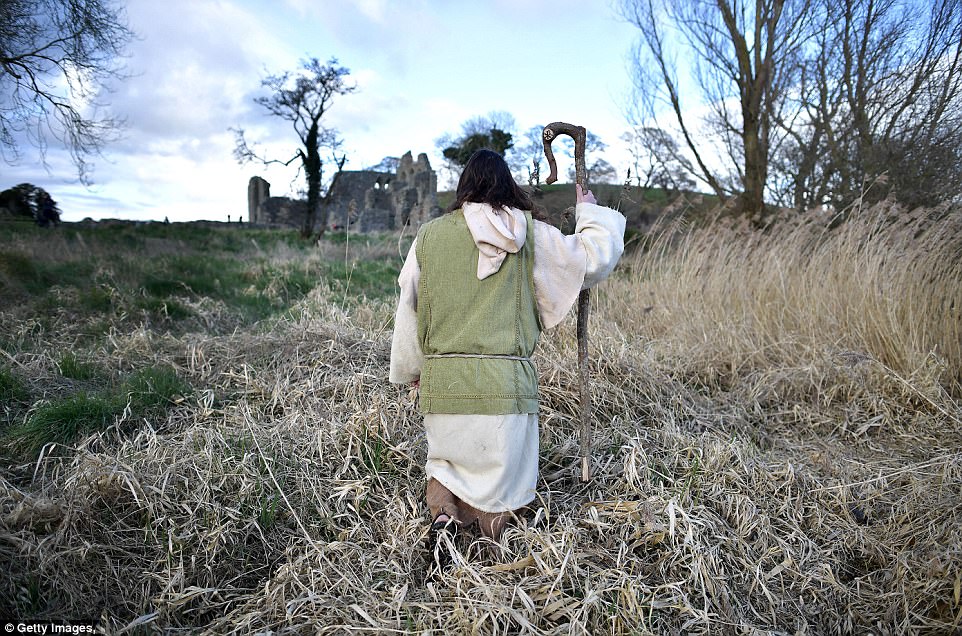
Patrick's real name was probably Maewyn Succat. His father, Calpornius, was a Romano-British army officer and a deacon. Legend has it that he used the native shamrock as a symbol of the holy trinity when preaching - while some say he brought the Latin alphabet to Ireland. However, contrary to popular belief, it was blue, not green, that coloured his vestiments
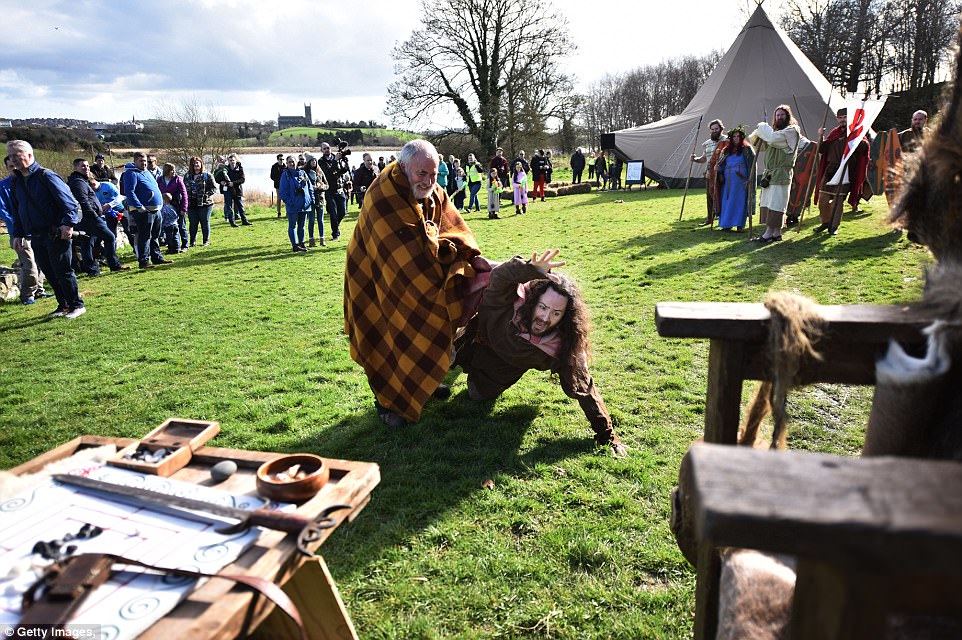
Patrick had great success in converting the Irish, and three assistant bishops from France were sent to help him, among them St. Sechnall. Within his lifetime the Irish had been transformed into God-fearing people
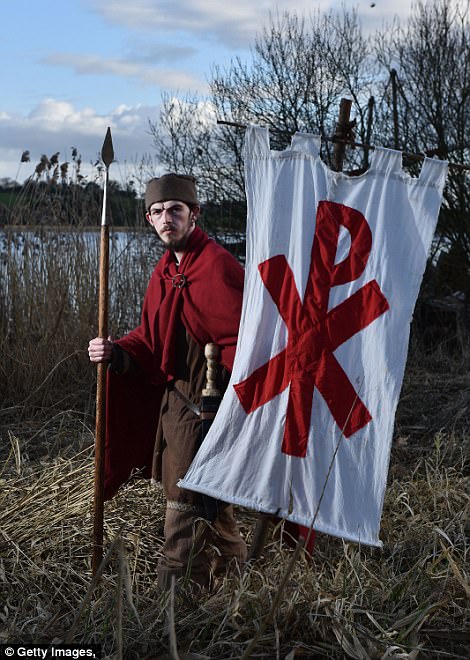
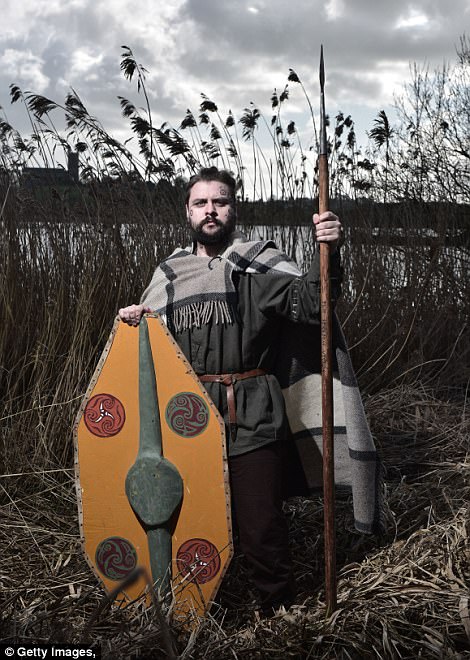
Under Irish law from 1903 to 1970, St. Patrick's Day was a religious observance for the entire country, meaning that all pubs were closed for the day. The law was overturned in 1970, when St. Patrick's was reclassified as a national holiday - allowing the taps to flow freely once again

Today, millions across the world celebrate Saint Patrick's Day with raucous parades. Dublin has a parade that attracts hundreds of thousands of people, while in Chicago the river is dyed green for a few hours. The biggest parade takes place in New York - a city with an enormous Irish tradition following the mass immigration during the Irish potato famine
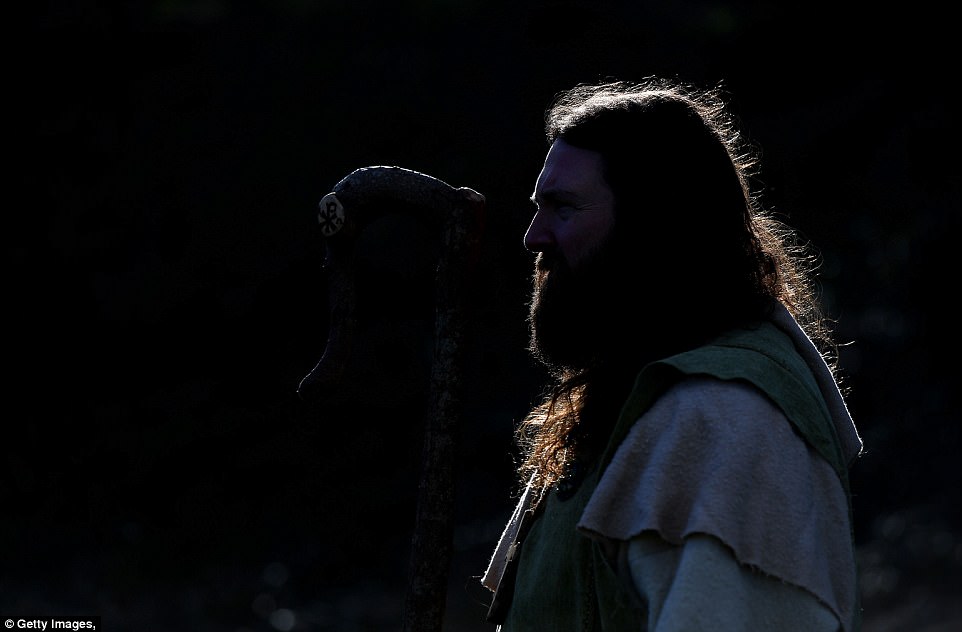
According to legend, St. Patrick drove all the snakes out of Ireland. In reality, this probably did not occur, as there is no evidence that snakes have ever existed in Ireland. Despite this, researchers suggest that the term 'snakes' may be figurative and refer to pagan religious beliefs and practices
Read more: Actors recreate St Patrick's return to Ireland | Daily Mail Online
Follow us: @MailOnline on Twitter | DailyMail on Facebook
A saintly arrival: Actors dressed in medieval costumes take to a rowing boat to re-enact St Patrick's first landing on Irish shores in 432AD
Saint Patrick brought religion to Ireland after having a vision from God while he was still a slave
After escaping slavery Saint Patrick trained at a French monstary before returning to Ireland
Legend has it that he rid the country of snakes - although many interpret this as meaning paganism
Today, raucous celebrations are found around the world as people celebrate their Irish ancestry - no matter how distant
By Rod Ardehali For Mailonline
12 March 2017
Saint Patrick's Day is perhaps the most raucous celebration of any saint as parties and parades take place across the globe every year on March 17.
Shouts of slainte are to be heard amid clinking glasses of Guinness and whisky as people celebrate their Irish ancestry - no matter how distant.
So far have the Irish travelled that revelry is to be found in Australia, America and even parts of Africa - not forgetting Dublin itself.
But how much do most people really know about the Patron Saint of Ireland, the 16-year-old boy who was kidnapped by pirates - who allegedly rid Ireland of snakes - and whose original vestiments were actually blue, not green?

An actor playing Saint Patrick sails past Down Cathedral as the re-enactment of his first landing on Irish shores takes place at Inch Abbey in Downpatrick, Northern Ireland. The Irish annals for the fifth century date Patrick's arrival in Ireland at 432 and the patron saint of Ireland's remains are believed to buried at Down Cathedral

When Saint Patrick was 16-years-old he was kidnapped by Irish pirates and sold into slavery in Ireland. According to his autobiographical confessions, the following six years were spent working as a shepherd on Mount Slemish in Co. Antrim

During his six years imprisonment at the hands of slave owners, Saint Patrick began to reflect on his lack of faith and became a devout follower of Christianity. He spent much time praying and fasting before one day having a vision which led him to stow away on a boat bound for Britain - returning to his family


Some 12 years later he returned to Irish shores as a bishop having received the Pope's blessing to spread the word of God

Saint Patrick met the Celtic chieftain, Dichu, who would become his first convert. Dichu gave Patrick a barn two miles away at Saul - 'sabhall', meaning 'barn' in Irish. This became his first church


Some of chieftain Dichu's warriors pose during their reenactment carrying traditional Celtic weaponry and draped in tartan throws


King Dichu and his druidess pose for a portrait during the re-enactment of the landing of Saint Patrick on Irish shores

Patrick's real name was probably Maewyn Succat. His father, Calpornius, was a Romano-British army officer and a deacon. Legend has it that he used the native shamrock as a symbol of the holy trinity when preaching - while some say he brought the Latin alphabet to Ireland. However, contrary to popular belief, it was blue, not green, that coloured his vestiments

Patrick had great success in converting the Irish, and three assistant bishops from France were sent to help him, among them St. Sechnall. Within his lifetime the Irish had been transformed into God-fearing people


Under Irish law from 1903 to 1970, St. Patrick's Day was a religious observance for the entire country, meaning that all pubs were closed for the day. The law was overturned in 1970, when St. Patrick's was reclassified as a national holiday - allowing the taps to flow freely once again

Today, millions across the world celebrate Saint Patrick's Day with raucous parades. Dublin has a parade that attracts hundreds of thousands of people, while in Chicago the river is dyed green for a few hours. The biggest parade takes place in New York - a city with an enormous Irish tradition following the mass immigration during the Irish potato famine

According to legend, St. Patrick drove all the snakes out of Ireland. In reality, this probably did not occur, as there is no evidence that snakes have ever existed in Ireland. Despite this, researchers suggest that the term 'snakes' may be figurative and refer to pagan religious beliefs and practices
Read more: Actors recreate St Patrick's return to Ireland | Daily Mail Online
Follow us: @MailOnline on Twitter | DailyMail on Facebook
Last edited:

